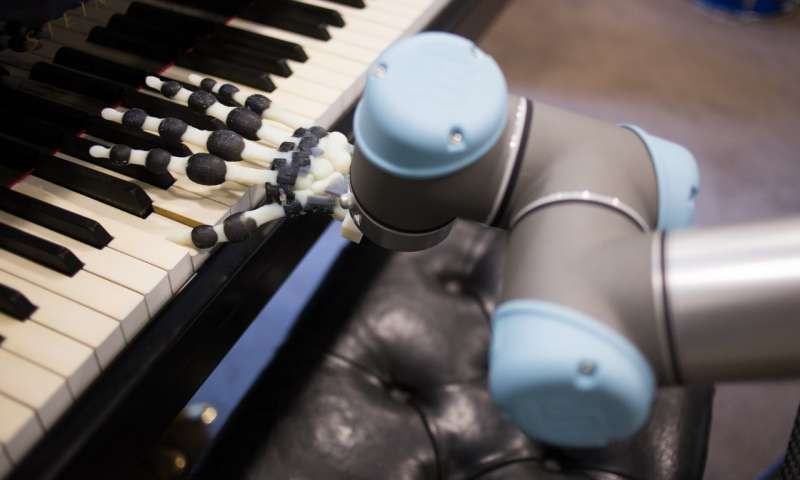NEWS
Scientists printed a hand on a 3D printer that can play the piano

Scientists printed on a 3D printer a robotic arm that can play simple musical melodies on the piano, manipulating with its brush. The robot does not differ in virtuosity, however, using its example, we again saw how difficult it is to reproduce all the possibilities of the human hand.
The robot's hand, developed by Cambridge University engineers, imitated all the bones and ligaments - with the exception of the muscles and tendons - of the human palm. This did not allow the fingers to move independently of each other. Despite this, the robot was still able to demonstrate different styles of playing the keys - staccato and legato. The results of the study, published in the journal Science Robotics, can help in the development of subsequent robots that will be capable of more natural movements while spending the minimum amount of energy.
The complex actions associated with the movement of animals and machines are the result of interaction between the brain (or controller), the environment and the body. The mechanical properties and design of the systems are important for rational functioning and help animals and machines move in a complex way without wasting energy.
“We can use passivity to achieve a wide range of robot movements: for example, when walking, swimming or flying. Sophisticated mechanical design allows you to achieve maximum range of motion with minimal management costs: in our work we wanted to see how many variable motions we can get with just one mechanic, ”says Cambridge employee and lead author Josie Hughes.
The device of the human hand is incredibly complex, so its reconstruction by the robot poses a serious challenge for engineers. Most modern advanced robots are not able to solve problems that even small children can easily perform.
The robots were “taught” to play the keys, drawing attention to how the mechanics, material properties, the environment and the wrist work affect the dynamic model of the hand. The researchers programmed the robot to play several short musical melodies in different styles and tempos. According to the engineers, even according to the results of these basic tests, scientists will get quite complex behaviors for the robot.
“The main goal of this project is to understand embedded intelligence, that is, intelligence in our mechanical body. Bones, ligaments and skin function even without active brain control. Using modern technology of three-dimensional printing, we can now explore the importance of these organs and tools in isolation from active control, which is impossible to do with people playing the piano, since the human brain cannot be "turned off", unlike a robot. We believe that playing the piano is an ideal test of these passive systems since it is a complex and delicate task that requires a significant range of behavior to achieve different styles of play, ”scientists say.
According to them, the results of the study will help in solving more complex problems: for example, in the development of robots that can perform surgical operations or process fragile items.


